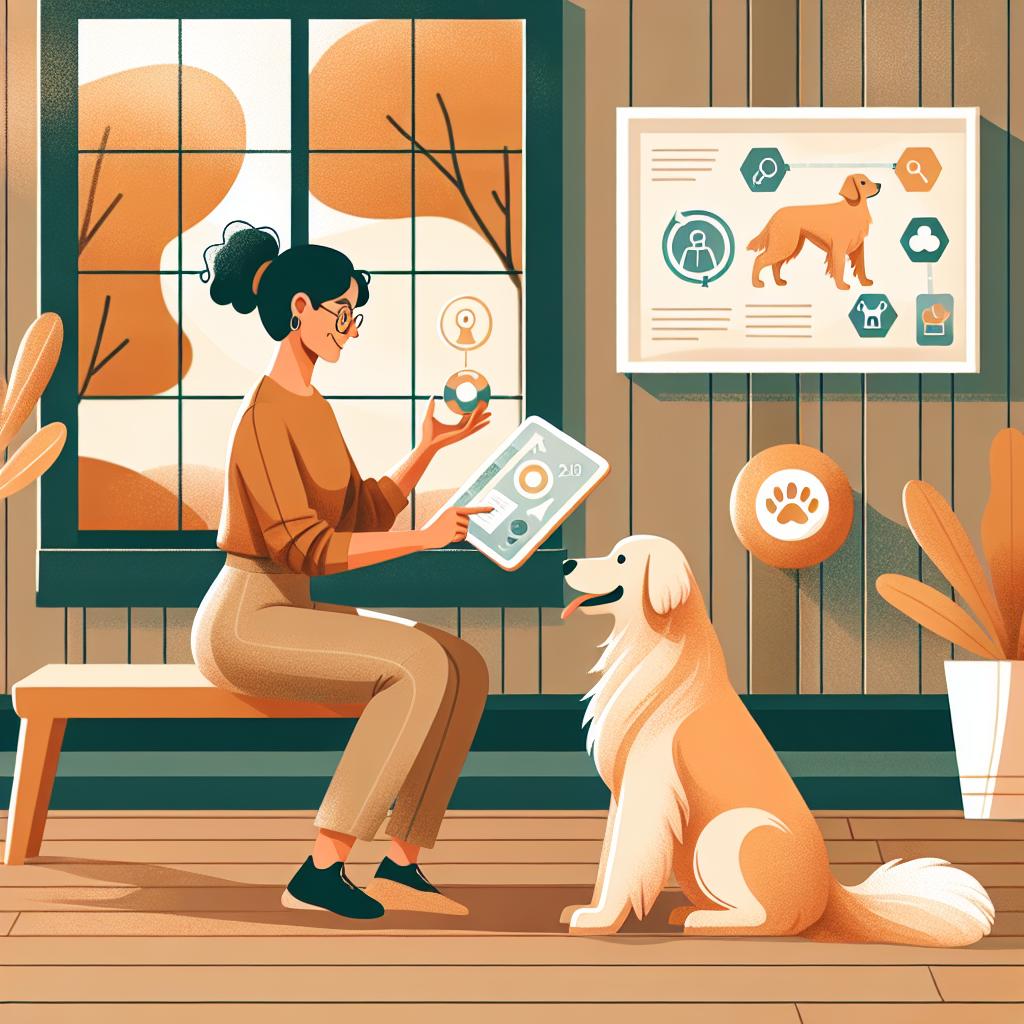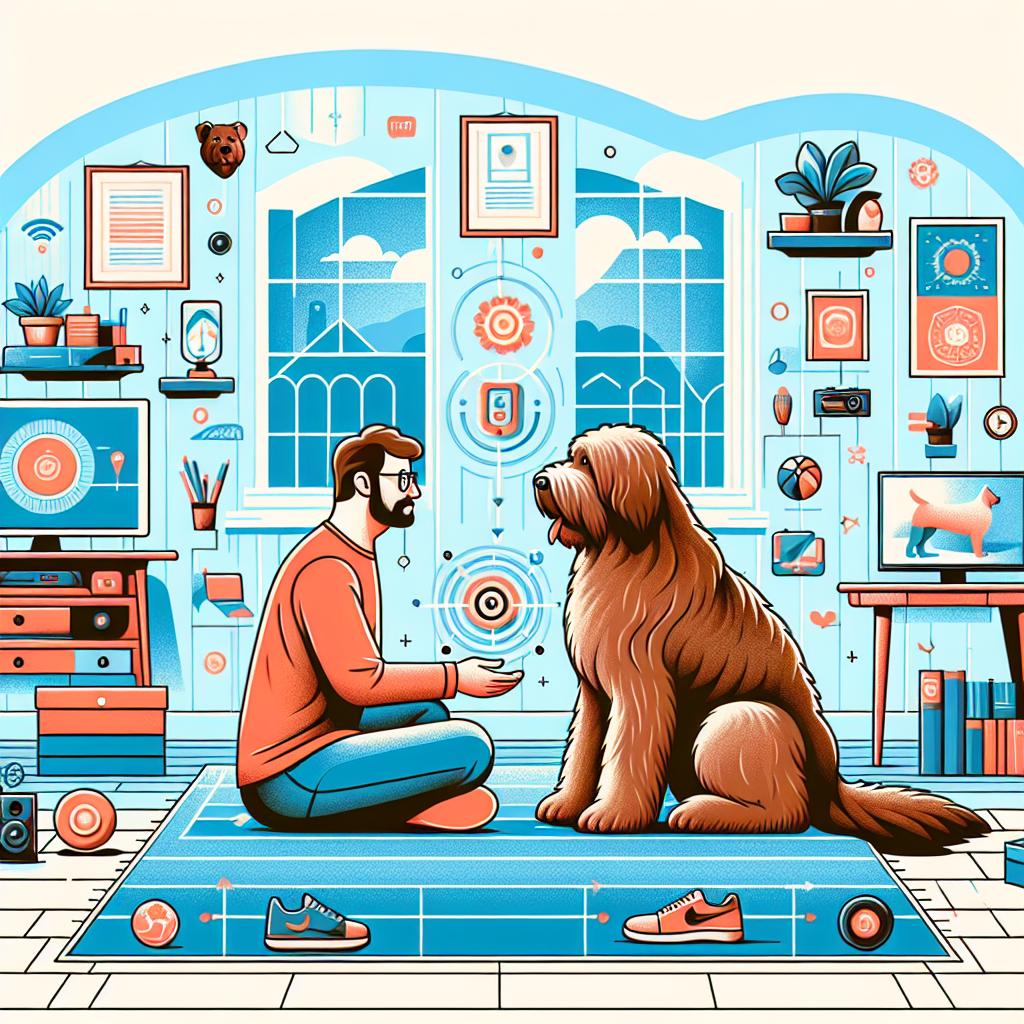How to Teach Your Dog to Respect Personal Space: Creating Boundaries for a Harmonious Home
In the cozy corners of our homes, a world of companionship unfolds between us and our four-legged friends. As we navigate this bond, it becomes essential to establish boundaries that promote mutual respect. Just as humans thrive when given the gift of personal space, our canine companions benefit from understanding and acknowledging our limits. Teaching your dog to respect personal space goes beyond mere obedience; it’s about fostering trust and enhancing the quality of your relationship. In this article, we will explore effective strategies to communicate these boundaries clearly, ensuring that both you and your furry friend can coexist in harmony while enjoying the unique joys that come with sharing your lives together. Whether you’re welcoming a new pup or refining the behavior of an established family member, understanding the balance of space can transform your interactions and create a peaceful home environment.
Understanding a Dogs Natural Instincts and Boundaries
Understanding your dog’s instincts is crucial in teaching them to respect personal space. Dogs are naturally social animals, drawn to humans and other dogs through instinctual behaviors—their need for companionship can sometimes blur the lines of personal boundaries. Recognizing their body language is essential; for example, a wagging tail doesn’t always indicate happiness. Dogs communicate through subtle cues like ear position, facial expressions, and posture. By observing these signs, you can ascertain when your dog feels comfortable or when they might need more space. Create a safe environment by allowing them to retreat to a designated spot during overwhelming situations.
Establishing clear boundaries is equally important for fostering mutual respect. Implementing consistent training techniques helps your dog understand the limits of their interactions with you and others. Use positive reinforcement methods to reward them when they respect your space, such as sitting calmly or remaining within a defined area. Consider these practices:
- Use commands like “stay” or “leave it” to signal when they need to maintain distance.
- Incorporate structured playtime to teach self-control and patience.
- Establish a quiet zone where they can relax without disturbances.

Establishing Clear Rules for Personal Space
Establishing guidelines for your dog’s personal space is essential for fostering good behavior and ensuring a harmonious environment. Begin by designating specific areas within your home as “no-go zones” for your pet. Use simple commands such as “stay” and “leave it” to reinforce the boundaries around these spaces. Consistency is key; every family member should adhere to the same rules, reinforcing the message that certain areas are off-limits. This not only helps your dog understand their boundaries but also creates a clear distinction between acceptable and unacceptable behaviors.
In addition to physical boundaries, consider implementing various rewards and consequences to reinforce the concept of personal space. Positive reinforcement can be achieved through treats or praise when your dog respects the designated areas. Conversely, if they invade someone’s space, a gentle correction may be necessary, followed by redirecting them to their own space. Below is a simple table illustrating the rewards and corrections you can use:
| Action | Response |
|---|---|
| Dog stays in personal space | Offer a treat or praise |
| Dog invades personal space | Gentle correction, then redirect |
| Consistent behavior | Provide a favorite toy or extra playtime |
Positive Reinforcement Techniques to Encourage Respect
Using positive reinforcement techniques can significantly enhance your dog’s understanding of respect regarding personal space. By rewarding good behavior with treats, praise, or playtime, you create a direct correlation between respecting boundaries and receiving something enjoyable. Here are some effective strategies to implement:
- Use Treats: When your dog maintains a safe distance during your personal time, give them a treat immediately to reinforce the behavior.
- Verbal Praise: Accompany treats with enthusiastic praise. A simple “Good boy!” or “Well done!” can motivate them to repeat their behavior.
- Interactive Play: Engage your pet in playtime when they respect your space. This can be a fun way for them to learn boundaries while bonding with you.
Additionally, establishing clear commands can help your dog grasp what it means to respect personal space. Using consistent cues such as “back” or “stay” can encourage them to understand their boundaries. Consider incorporating the following approaches:
| Command | Action |
|---|---|
| Back | Dog steps away from your immediate space. |
| Stay | Dog remains in place for a set duration. |
| No Jump | Dog refrains from jumping on you or others. |

Creating a Comfortable Environment for You and Your Dog
Creating a serene space can make a significant difference in how your dog perceives its surroundings. Dogs, much like humans, thrive in an environment where they feel secure and comfortable. To enhance this sense of peace, consider the following elements:
- Safe Retreats: Designate a specific area in your home where your dog can retreat when feeling overwhelmed. This could be a cozy bed or a crate in a quiet corner.
- Consistent Routine: Establishing a daily routine can help your dog anticipate activities, reducing anxiety and the need for constant attention.
- Comfort Items: Provide comforting items such as toys, blankets, and even your old clothing that can provide a sense of security.
Additionally, consider using visual barriers to delineate personal space. These could be pet gates or strategically placed furniture that encourages your dog to understand where they can and cannot go. Implementing these boundaries not only aids in your dog’s training but also fosters a respectful coexistence. Here’s a quick overview of some effective strategies:
| Strategy | Description |
|---|---|
| Establish Boundaries | Use gates or furniture to create a defined space. |
| Reward Calm Behavior | Use treats to reinforce positive responses to personal space. |
| Train Commands | Teach commands like “stay” or “place” to instill respect for boundaries. |
Q&A
Q&A: How to Teach Your Dog to Respect Personal Space
Q1: Why is it important for my dog to respect personal space?
A: Just like humans, dogs also benefit from understanding boundaries. Teaching your dog to respect personal space promotes a sense of security for both you and your furry friend. It helps prevent overexcitement, anxiety during social interactions, and can reduce the likelihood of aggressive behavior. A well-adjusted dog is happier and more relaxed in various environments.
Q2: How can I tell if my dog is invading my personal space?
A: Dogs can display various behaviors when they’re crowding your space. Common signs include jumping on you, leaning against you, or consistently following you around. Additionally, if your dog becomes anxious or agitated when you try to create distance, they may not fully understand where their boundaries lie.
Q3: What are some effective techniques to teach my dog about personal space?
A: Start by establishing clear boundaries. You can use commands like “sit” or ”stay” to encourage your dog to maintain a certain distance from you. Reward them with treats or praise when they respect these boundaries. Another effective technique is to use a designated mat or bed; teaching your dog to go to their mat can help reinforce the idea of personal space.
Q4: How can I use positive reinforcement in this training process?
A: Positive reinforcement is key! Whenever your dog respects your space without prompting, immediately reward them with treats, praise, or playtime. This encourages them to repeat the behavior, as they start to associate maintaining distance with positive outcomes. Consistency is vital—be sure to reward them every time they exhibit the desired behavior.
Q5: What should I avoid doing while training my dog?
A: Avoid using harsh corrections or negative reinforcement, as this may lead to fear or anxiety. Dogs learn best in a calm and encouraging environment. Instead of yelling or pushing your dog away, redirect their attention or calmly guide them back to their designated space. Remember, training should be a positive experience for both you and your dog.
Q6: How can socialization play a role in teaching personal space?
A: Socialization is crucial in helping dogs understand the boundaries of space. Introducing your dog to different environments, people, and other dogs can help them learn how to navigate personal space in various contexts. Arrange playdates with well-mannered dogs, where you can observe and guide your dog’s interactions. This will help them become more adept at recognizing and respecting others’ boundaries.
Q7: How long does it typically take to teach my dog to respect personal space?
A: The timeline can vary based on your dog’s personality, age, and prior training experiences. Some dogs may grasp the concept quickly, within a few days to weeks, while others might take longer. Patience and consistency are key; stick to your training plan, and celebrate the small victories along the way.
Q8: What if my dog doesn’t seem to understand what I’m asking?
A: If your dog isn’t catching on, consider reviewing your training methods. Ensure you’re using consistent commands and rewards. It might also help to reduce distractions during training sessions. Additionally, consult with a professional dog trainer for personalized guidance to address any challenges you encounter.
Remember, like all skills, teaching your dog to respect personal space takes time and dedication. With patience and a positive approach, you and your dog can create an environment that nurtures mutual respect and understanding. Happy training!
In Conclusion
As we conclude our exploration into teaching your dog to respect personal space, remember that patience and consistency are your greatest allies. Each dog is unique, and the journey will unfold at its own pace. By fostering an understanding and nurturing environment, you not only reinforce boundaries but also strengthen the bond between you and your furry companion. Whether through training exercises, positive reinforcement, or simply spending quality time together, the insights shared in this article can guide you toward a more harmonious relationship. Enjoy the process, celebrate the small victories, and embrace the wonderful journey of growth you both are on. After all, respect is a two-way street, and together, you can navigate it with love and understanding. Happy training!

